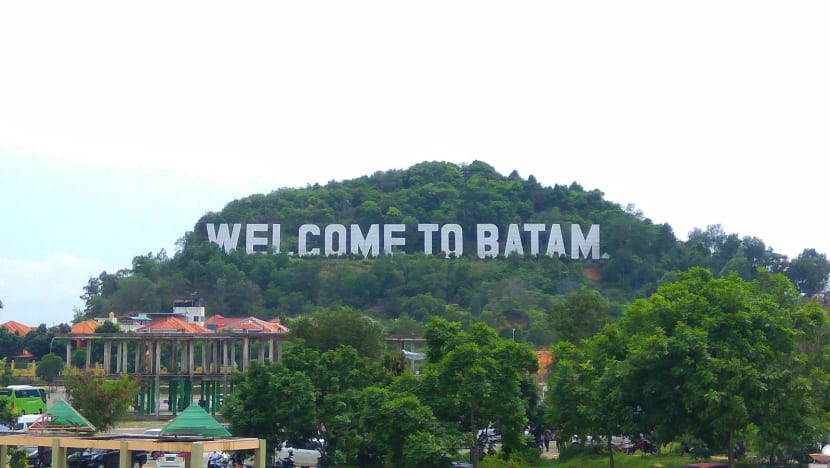Commentary: Batam struggles to up the ante as Johor-Singapore Special Economic Zone rises
The Johor-Singapore Special Economic Zone poses deep questions for nearby Batam, says an ISEAS - Yusof Ishak Institute senior fellow.

SINGAPORE: The Johor-Singapore Special Economic Zone (SEZ) was launched in January 2025 with much fanfare. The zone is a swathe of land in the southern Malaysian state of Johor that seeks to attract investment by leveraging its proximity to and differing cost structures from Singapore.
Underpinned by tax incentives for skill-intensive activities and easier border procedures, the initiative has generated interest from the private sector in Singapore. Going by past investment trends, southern Johor is particularly attractive for manufacturing-related projects.
But lying just 25km south of Singapore is the northern coast of Batam, the economic motor of Indonesia’s Riau Islands province, and its neighbour Bintan, which have also sought to leverage their proximity and cost advantage relative to Singapore. Given its similar policy framework, cost argument and greater efficiency for investors, the SEZ poses a threat to Batam, which has long been a source of foreign direct investment for Indonesia.
Batam was first launched as a site for “high-tech” investment in 1973. Funded by Pertamina, the national petroleum corporation, the island received considerable public funding and was overseen by an elite central government agency, the Batam Industrial Development Authority (BIDA). From 1978 onwards, BIDA was helmed by no less than BJ Habibie, the former long-serving minister for research and technology.
Yet, despite its location, branding and generous financing, Batam struggled to draw in investment.
BATAM'S RISE
The island began to take off only in 1990 when, along with its sister island Bintan, it became part of the Singapore-Johor-Riau (SIJORI) campaign. This tripartite initiative courted international investment by leveraging its territories’ comparative advantage and good connectivity.
Beyond international promotion, investment in Batam was catalysed by the repeal of restrictive legislation, particularly regarding equity thresholds and the ownership of industrial estates by private sector operators. Subsequently, a cohort of Japanese, European, and American electrical and electronics firms set up operations, largely managed by affiliates based in Singapore.
The Asian financial crisis of 1997 put paid to the SIJORI campaign as policymakers scrambled to contain the fallout. Nonetheless, much of the manufacturing operations that came in the 1990s stayed in the various SIJORI territories, demonstrating the economic potential of such cross-border networks.
Batam and Bintan’s economic fortunes received a further boost in 2002 when the Integrated Sourcing Initiative in the US-Singapore free trade agreement allowed electronics and medical device components procured from the islands to be included in Singapore’s customs area for shipment to the US. In 2009, all of Batam, along with parts of Bintan, were made free trade zones (FTZ), allowing duty-free imports and exports.
Over the subsequent two decades, Batam focused on its niche as an export-oriented production hub - much like Johor to its north. However, the island’s attraction began to fade as significant industrial relations crises hit it.
This led to an exodus of many of the island’s electrical and electronics producers. The impact was offset by increased investment in the shipbuilding and repair sectors. This surge, in turn, subsided due to overcapacity and obstacles to selling on the local market due to Batam’s FTZ status.
Following a collapse in tourism due to COVID-19, Batam’s economy has been on the mend. From -2.5 per cent growth in 2020, the island’s economy bounced back to 4.8 per cent in 2021 and oscillated between 6.5 and 7 per cent between 2022 and 2024. Batam has reeled in investments from solar panel, power generation and semiconductor producers. Its crowning achievement is Apple’s pledge to invest US$1 billion to manufacture AirTags on the island.
Fledgling service sectors such as animation and film, as well as data centres, have further diversified its economy. These green shoots and other target sectors will hopefully be boosted by SEZs targeting the digital economy, health, and aeronautical maintenance, repair and operation sectors. Some of these sectors are also sought after by the Johor-Singapore SEZ.
STALLED BY DYSFUNCTION
Despite having such wind in its sails, Batam faces substantial issues.
BIDA has begun to lose its technocratic image and autonomy. Following Indonesia’s ambitious decentralisation drive in 2001, the agency has been caught between different levels of government. Recent changes have placed it under the aegis of the municipal government, with the mayor of Batam as its chairman. Leaves of absence for campaigning and appointments of politicians to its board have raised concerns of political interference.
The establishment of these new SEZs and their co-existence with the older FTZs entail a confusing overlap of jurisdictions and incentives. It also means Batam is still carved out from the large Indonesian domestic market. Port infrastructure has been upgraded, but an undersupply of connections to major cities in Indonesia limits the potential for investments that seek to produce both for export and local needs.
Local-level dysfunctions remain. The private sector has decried relatively high electricity costs and higher taxes relative to other locations (including Johor). Land acquisition woes have continued, affecting both local communities and international investors. Perhaps most concerning are claims that rogue civil society organisations run extortion rackets in Batam.
Official statements from BIDA have welcomed the competition from the Johor-Singapore SEZ, even stating that Johor copied from Batam. However, the latest iteration in the competition between these two areas will push Batam’s authorities to dig deep.
Dr Francis E Hutchinson is a Senior Fellow and coordinator of the Malaysia Studies Programme at the ISEAS - Yusof Ishak Institute. This commentary first appeared on ISEAS - Yusof Ishak Institute’s blog, Fulcrum.















